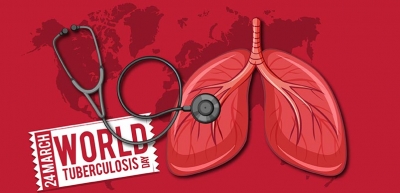
World TB Day is observed every year on March 24 to raise awareness about the infectious disease and to step up efforts to end the global TB epidemic. On this day in 1882, Dr Robert Koch announced that he had discovered the bacterium that causes tuberculosis. “The theme of World TB Day 2022 – ‘Invest to End TB.
Tuberculosis (TB) is a potentially serious infectious disease that mainly affects the lungs. The bacteria that cause tuberculosis are spread from person to person through tiny droplets released into the air via coughs and sneezes.
What causes tuberculosis?
Tuberculosis (TB) is caused by a bacterium called Mycobacterium tuberculosis. The bacteria usually attack the lungs, but TB bacteria can attack any part of the body such as the kidney, spine, and brain.
How does TB spread?
TB bacteria are spread through the air from one person to another. The TB bacteria are put into the air when a person with TB disease of the lungs or throat coughs, speaks, or sings. People nearby may breathe in these bacteria and become infected.
Which are the symptom of TB?
Signs and symptoms of active TB include:
- Coughing for three or more weeks.
- Coughing up blood or mucus.
- Chest pain, or pain with breathing or coughing.
- Unintentional weight loss.
- Fatigue.
- Fever.
- Night sweats.
- Chills.
What is latent TB?
TB bacteria can live in the body without making you sick. This is called latent TB infection. In most people who breathe in TB bacteria and become infected, the body is able to fight the bacteria to stop them from growing. People with latent TB infection: Have no symptoms.
How is TB Disease Treated?
TB disease can be treated by taking several drugs for 6 to 12 months. It is very important that people who have TB disease finish the medicine, and take the drugs exactly as prescribed. If they stop taking the drugs too soon, they can become sick again; if they do not take the drugs correctly, the germs that are still alive may become resistant to those drugs. TB that is resistant to drugs is harder and more expensive to treat. In some situations, staff of the local health department meet regularly with patients who have TB to watch them take their medications. This is called directly observed therapy (DOT). DOT helps the patient complete treatment in the least amount of time.
Credit : CDC
Picture Credit : Google




